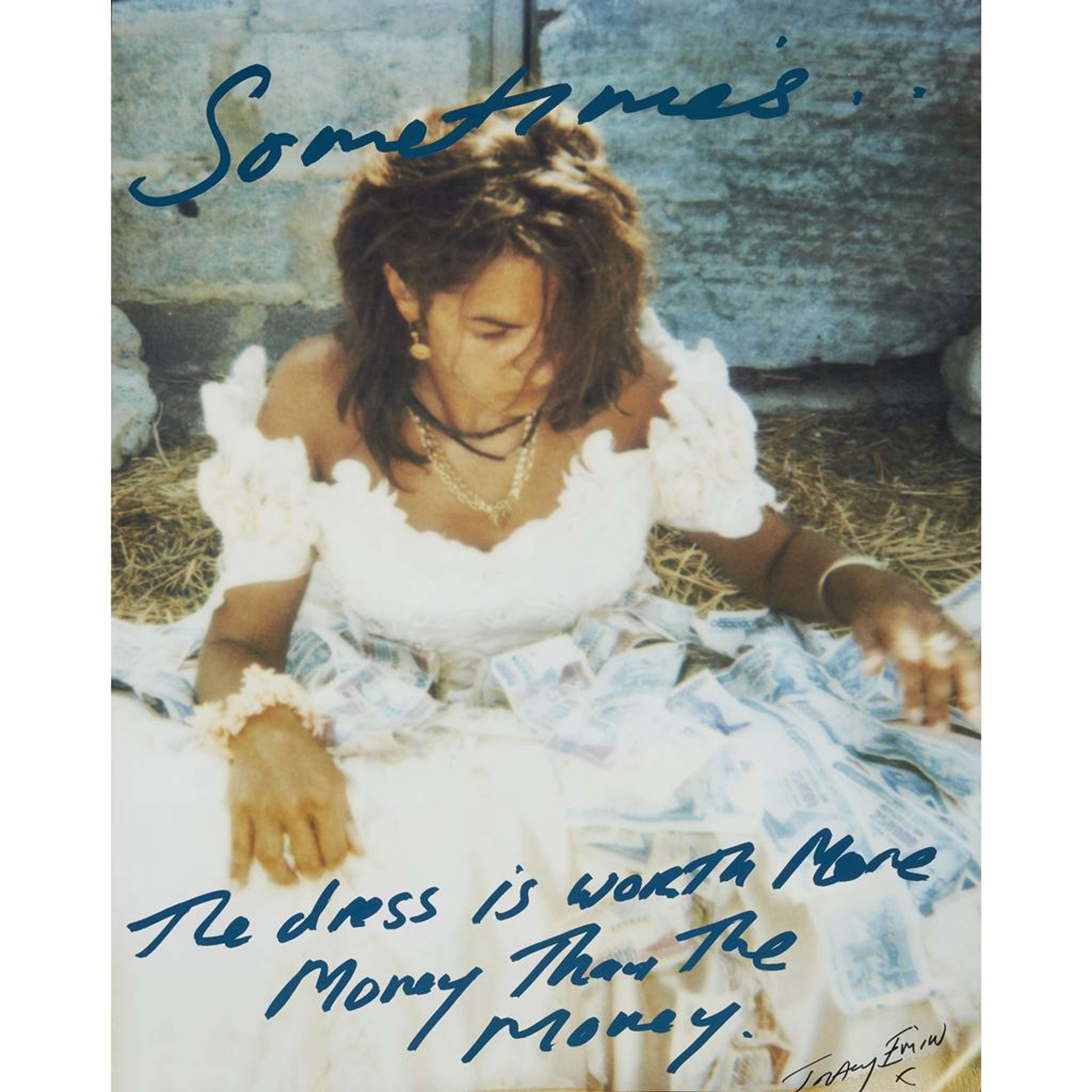
Sometimes The Dress Is Worth More Than The Money

Sometimes The Dress Is Worth More Than The Money
Signed Print
Tracey Emin
£1,750-£2,600
$3,500-$5,000 Value Indicator
$3,250-$4,800 Value Indicator
¥16,000-¥24,000 Value Indicator
€2,000-€3,000 Value Indicator
$18,000-$27,000 Value Indicator
¥360,000-¥540,000 Value Indicator
$2,350-$3,450 Value Indicator
There aren't enough data points on this work for a comprehensive result. Please speak to a specialist by making an enquiry.
60 x 60cm, Edition of 2000, Lithograph
Auction Results

Track auction value trend
Meaning & Analysis
This signed lithograph from 2001 is a limited edition of 2000 from Tracey Emin’s Polaroids collection. The vertical lithograph constitutes an enlarged snapshot taken from one of Emin’s most well-known and eponymous video works. In the image, Emin is shown sitting down in a barn dressed in a white wedding gown, whilst on her lap she accumulates banknotes in a gesture evocative of her work I’ve Got it All.
In recent years, Tracey Emin’s video artworks have captured much critical attention, reviving both scholarly and public interest for the enfant terrible of British contemporary art. Sometimes The Dress Is Worth More Than The Money is perhaps Emin’s most well-known and acclaimed piece of video art. The work was initially made in 2001, and has since been exhibited in notorious contemporary art galleries like White Cube, that dedicated an entire night to screening 14 of Emin’s films, and was presented recently at Xavier Hufkens, as part of Tracey Emin, Video Works, 1995-2017, the most comprehensive retrospective exhibition on Emin’s video works and films.
In the video, Emin runs throughout a bare and barren deserted landscape dressed in a vaporous white wedding gown. As she runs, a Spaghetti-Western soundtrack plays in the background, situating the video in a dialogue with early Hollywood cinema. Emin seems to be running away from her wedding, rebelling against the institution of marriage, a notion that is reinforced by the ironic choice of the title. As art critic David Rimanelli remarked, Emin’s work confronts societal conventions and commits numerous infractions of what is considered feminine and polite, unapologetically asserting herself regardless of the expectations placed on her body.